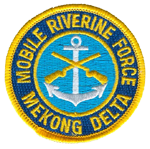The Naval Command in South Vietnam
February 12, 1999
![]()
In contrast to the carrier, amphibious, and naval gunfire support forces and, at least during early 1965, the coastal patrol force, which Commander Seventh Fleet directed the Navy’s forces within South Vietnam, were operationally controlled by Commander United States Military Assistance Command, Vietnam (COMUSMACV). Initially, General Westmoreland exercised this command through the Chief, Naval Advisory Group. But the increasing demands of the war required a distinct operational rather than an advisory headquarters for naval units. As a result , on 1 April 1966 Naval Forces Vietnam, was established to control the Navy’s units in the II, III, and IV Corps Tactical Zones. This eventually included the major combat formations: Coastal Surveillance Force (Task Force 115), River Patrol Force (Task Force 116), and Riverine Assault Force (Task Force 117). The latter unit formed the naval component of the joint Army-Navy Mobile Riverine Force. Commander Naval Forces, Vietnam (COMNAVFORV) also controlled the Naval Support Activity, (NSA) Saigon, which supplied naval forces in the II, III, and IV Corps areas. Naval Support Activity, Danang, provided logistic support to all American forces in I Corps, where the predominant Marines presence demanded a naval supply establishment. Naval Support Activity, Danang was under the operational control of Commander III Marines Amphibious Force.
COMNAVFORV also commanded the Naval Advisory Groups and the Seabees of the 3rd Naval Construction Brigade; the Military Sea Transportation Service Office, Vietnam, which coordinated the gargantuan sealift to Southeast Asia; the Officer in Charge of Construction Vietnam, who handled in-country construction by civilian contractors; The Naval Research and Development Unit, Vietnam, which tested new equipment in the field; and Commander Coast Guard Activities, Vietnam.

